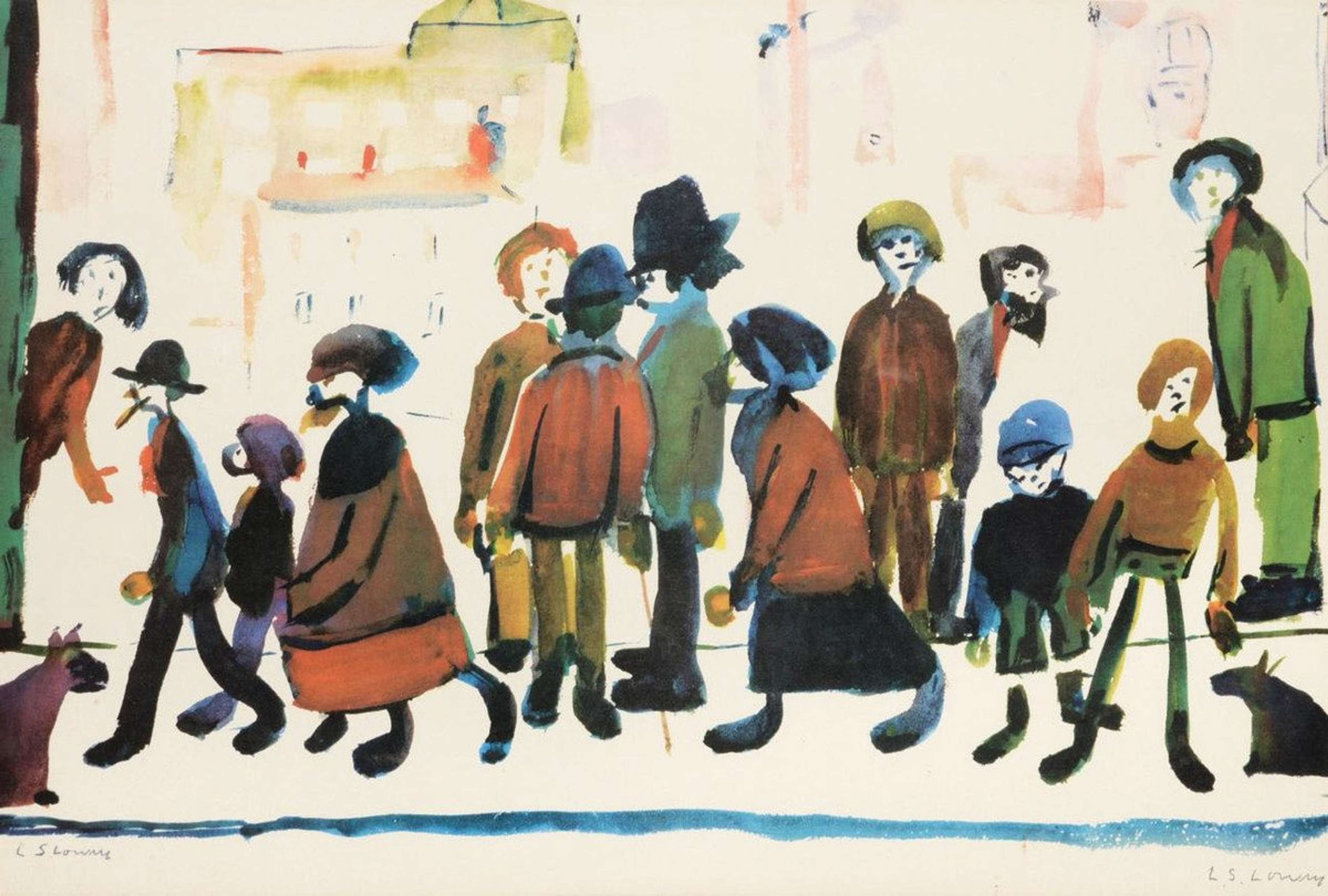 People Standing About © L.S Lowry 1972
People Standing About © L.S Lowry 1972
L S Lowry
73 works
L.S. Lowry's print market has seen significant growth over the past decade, with sales value increasing by over 100%. 2023 was particularly remarkable, as Lowry's market not only withstood economic challenges but also achieved record sales value and lots sold. The recognition of Lowry's print market is driven by the masterpieces that appear in marquee auctions, consistently attracting attention and fetching millions. Many of these works have been held in private collections for years, and the strong sales results highlight Lowry's timeless appeal and his mastery in depicting the northern English landscape. This article presents the record prices achieved for Lowry works in auction.
£7.8M for Going To The Match
 Going To The Match © LS Lowry 1953
Going To The Match © LS Lowry 1953In 2022, one of Lowry's most renowned and beloved paintings, Going To The Match (1953), was auctioned at Christie's. This iconic artwork, previously on loan to The Lowry in Salford and featured as the lead image in Lowry's 2013 Tate retrospective, was originally created for a 1953 exhibition sponsored by the Professional Football Association (PFA), where it earned Lowry his first-ever prize. After being publicly displayed at The Lowry in Salford since 2000, thanks to the PFA, the painting reappeared at auction after more than two decades. It was acquired by the Lowry arts centre in Salford, preserving it from disappearing into a private collection. The painting was purchased for £7.8 million, setting a new auction record for the artist and selling for four times its initial 1999 sales value.
£6.3M for Sunday Afternoon
 Image © Sotheby's / Sunday Afternoon © L. S. Lowry 1957
Image © Sotheby's / Sunday Afternoon © L. S. Lowry 1957 Sunday Afternoon (1957) was a highly anticipated lot at Sotheby's Modern British and Irish Art Evening Sale in March 2024. Having been kept in a private collection and not exhibited since 1967, this piece, featuring Lowry's signature matchstick figures, was expected to fetch a high price. As the star lot of the sale, it achieved £6.3 million, surpassing its high estimate of £6 million.
£5.6M for The Football Match
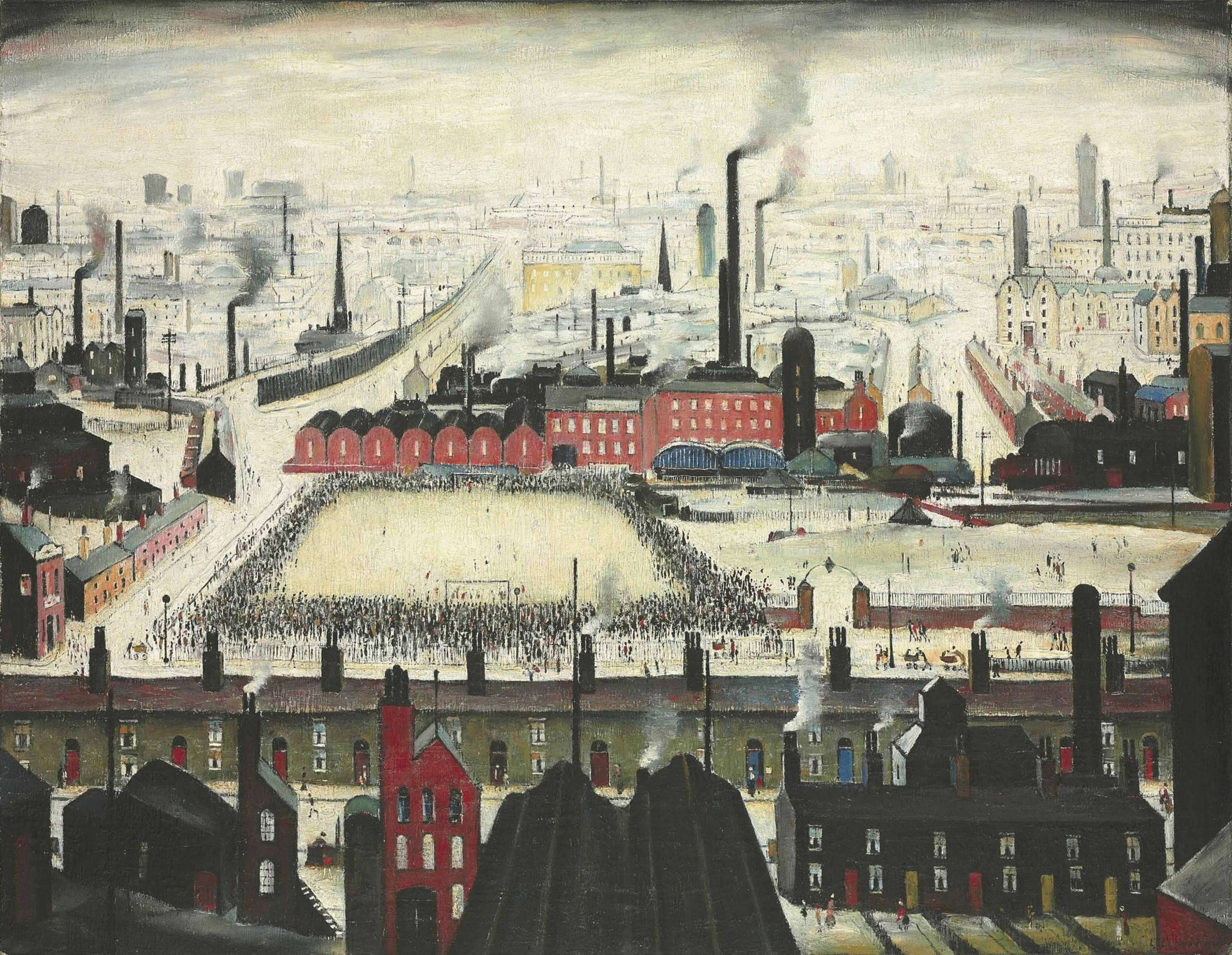 The Football Match © L. S. Lowry 1949
The Football Match © L. S. Lowry 1949The Football Match (1949) blends Lowry's love for industrial landscapes with his passion for football. As a Manchester City supporter, Lowry vividly captured the excitement of a Saturday afternoon crowd in this painting. After nearly 20 years out of the public eye, the piece appeared at Christie’s 20th Century British & Irish Art auction in London in May 2011, where it surpassed its high estimate of £4.5 million, selling for £5.6 million. It remains one of Lowry's top-selling works.
£5.6M for Piccadilly Circus, London
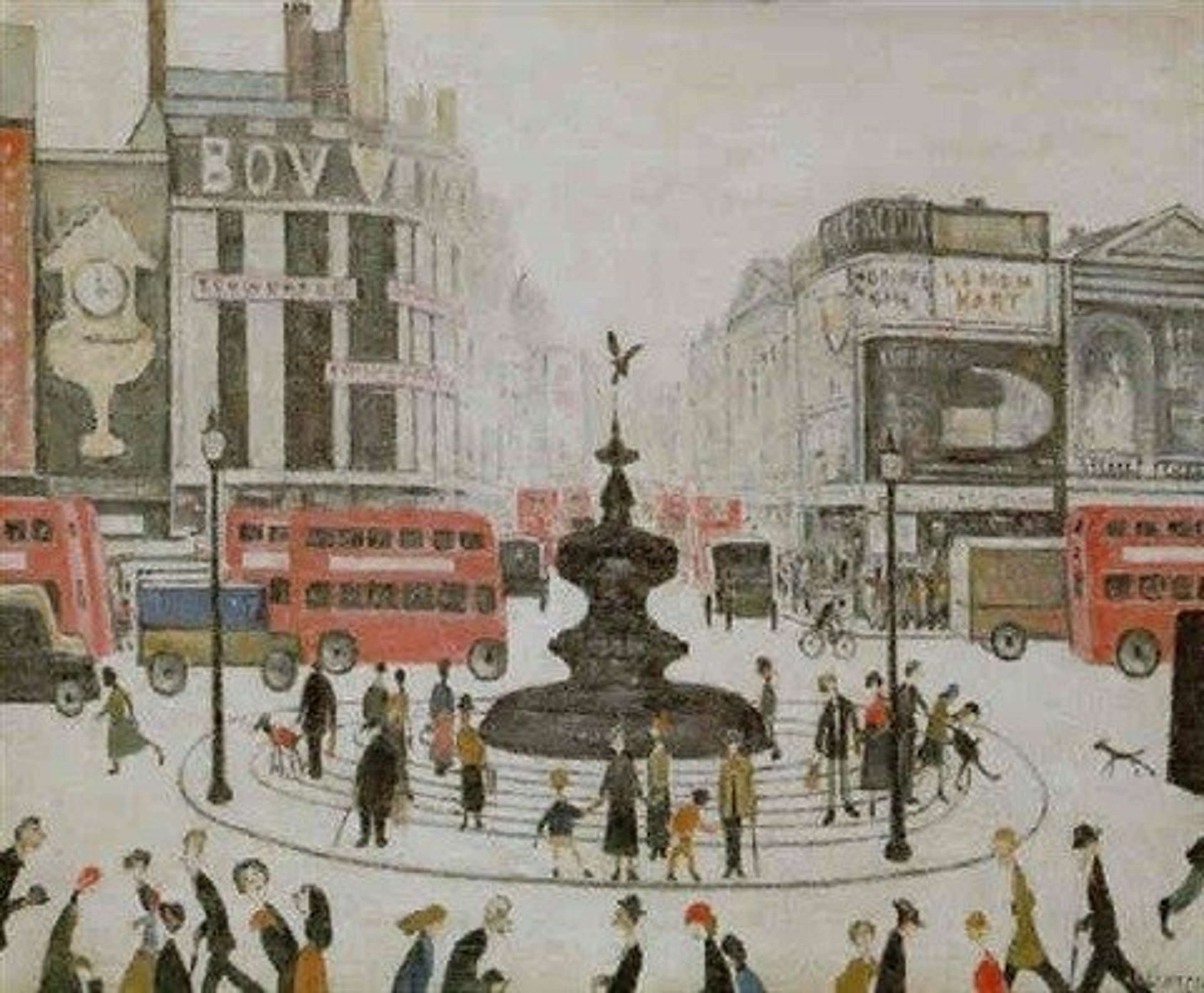 Piccadily Circus © L S Lowry 1960
Piccadily Circus © L S Lowry 1960Piccadilly Circus, London (1960) shares the record for the most expensive Lowry painting at auction, achieving £5.6 million at Christie’s in November 2011, just six months after The Football Match (1949) sold for the same amount. The painting had been hidden in a private collection for 35 years before its auction debut. It was later offered again at Sotheby’s London in March 2014, where it sold for a slightly lower £5.1 million. Lowry rarely painted London scenes, and Piccadilly Circus is one of only two works depicting the iconic landmark. Formerly owned by entrepreneur Lord Forte and esteemed Lowry collector A.J. Thompson, the painting remains a significant piece in Lowry’s oeuvre.
£5.3M for A Northern Race Meeting
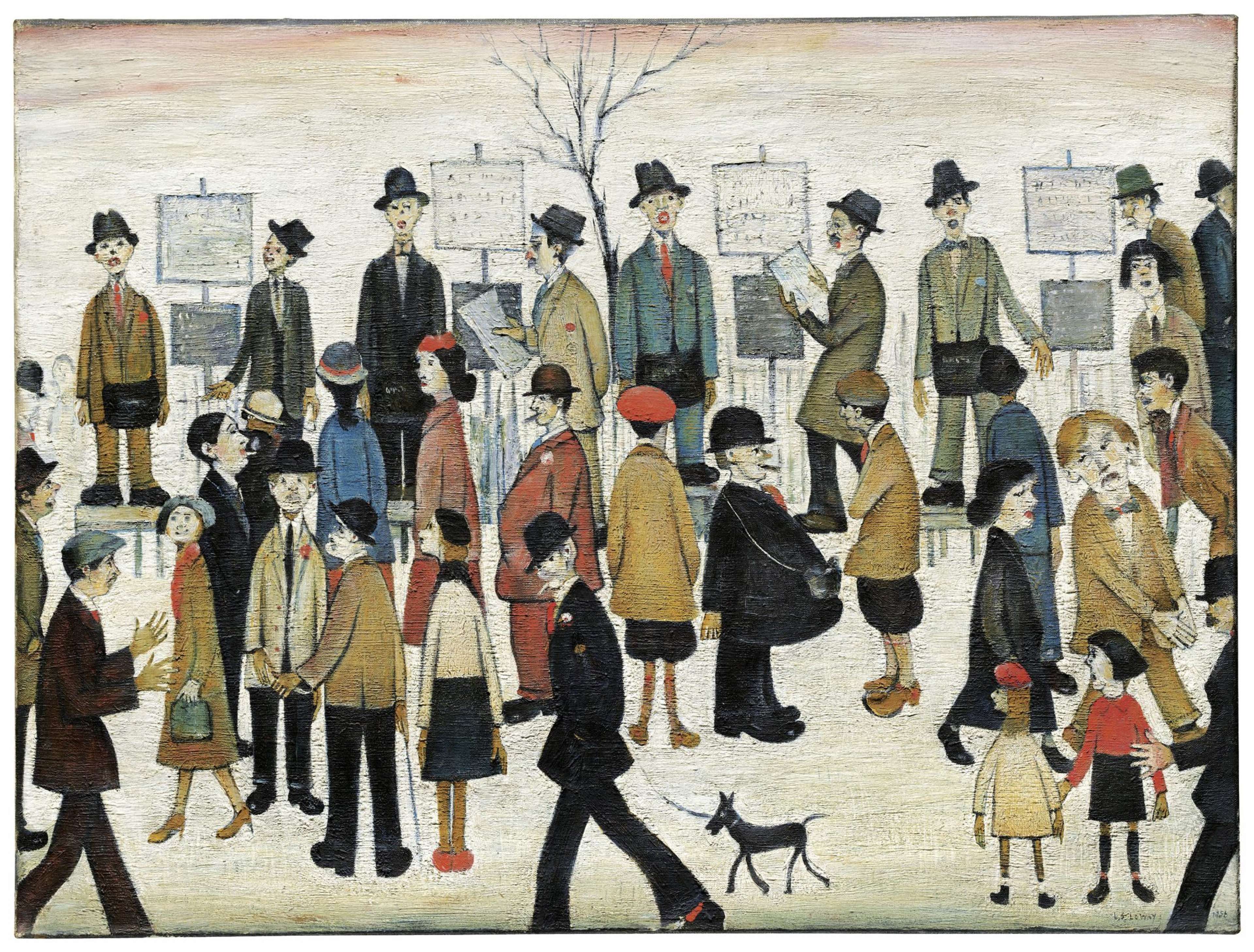 A Northern Race Meeting © L S Lowry 1956
A Northern Race Meeting © L S Lowry 1956Painted in 1956, A Northern Race Meeting (1956) captures a lively crowd at the racetrack, a rare subject for Lowry, who more often depicted football matches. Purchased shortly after its creation, the painting had been on long-term loan to Graves Art Gallery in Sheffield since 1983. When it was offered at Christie’s London in November 2018, it became the star lot of the evening, achieving over double its high estimate and selling for £5.2 million.
£3.8M for Good Friday, Daisy Nook
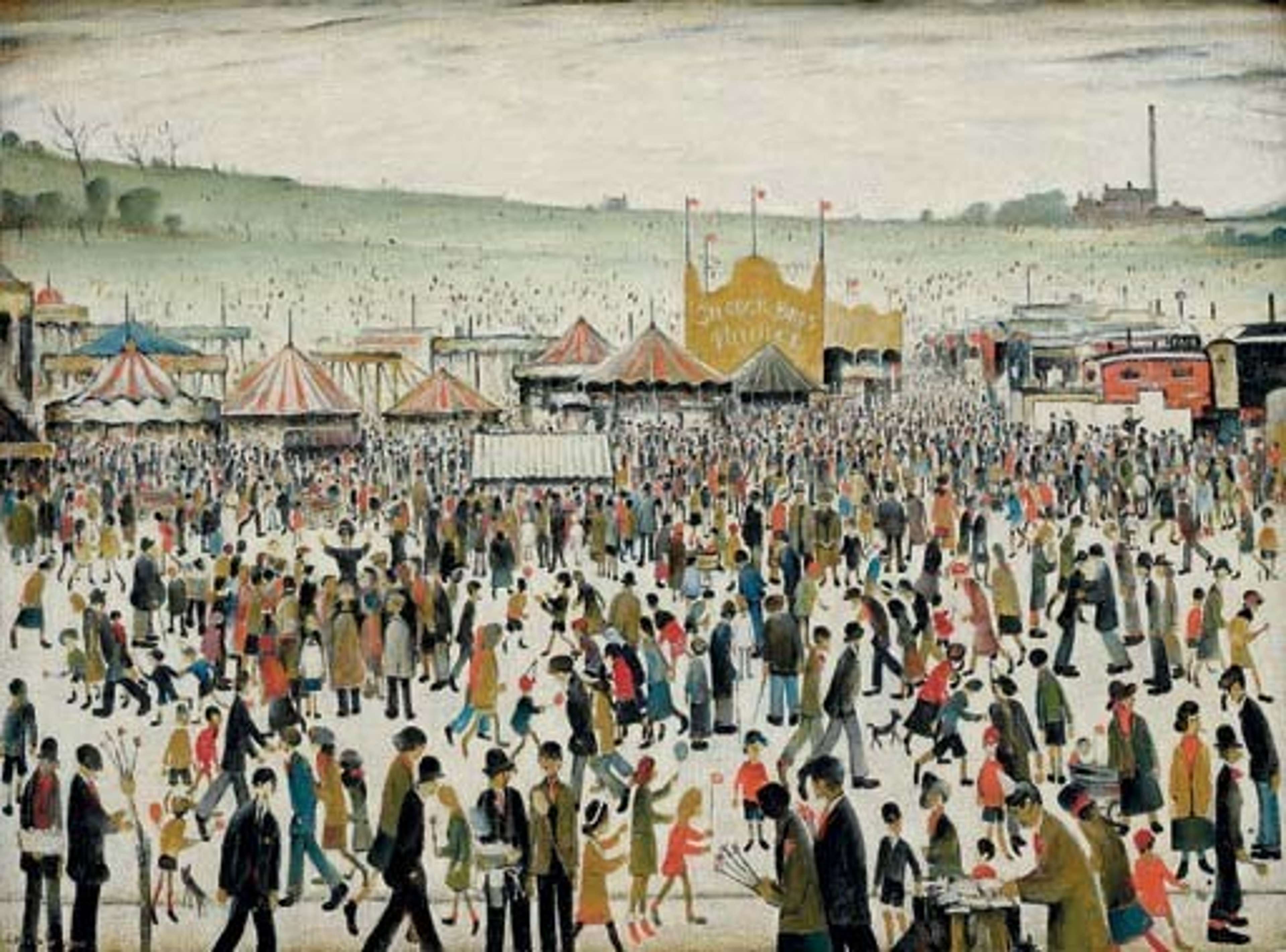 Good Friday, Daisy Nook © L S Lowry 1946
Good Friday, Daisy Nook © L S Lowry 1946Lowry once claimed, “I only deal with poverty; always with gloom. You’ll never see a joyous picture of mine. I never do a jolly picture.” However, Good Friday, Daisy Nook (1946) challenges this notion, depicting a lively scene at the annual Easter fair near Manchester, brimming with Post-War optimism, children with balloons, and bright, multicoloured tents. When it was offered at Christie’s London in June 2007, the painting far exceeded its high estimate of £1.5 million, setting a world auction record for Lowry, which stood until The Football Match (1949) sold four years later.
£3.4M for Fun Fair at Daisy Nook
 Fun Fair At Daisy Nook © L. S. Lowry 1953
Fun Fair At Daisy Nook © L. S. Lowry 1953Painted in 1953, Fun Fair at Daisy Nook is an alternate depiction of the annual Easter fair, similar to Good Friday, Daisy Nook (1946) painted seven years earlier. The yellow tent of the 'Silcock Bros. Thriller' fairground ride prominently features in the background, while people of all ages wander in the foreground. This painting, also from the Lord Forte Collection, was offered at Christie’s London in November 2011, where it became the second-highest lot of the evening selling for £3.4 million.
£2.9M for Going To The Match
 Going To The Match © L S Lowry 1928
Going To The Match © L S Lowry 1928Going to the Match (1928) is a formative work by Lowry offering fresh insights into the inception of his artistic evolution culminating in the 1920s and 30s. The work highlights his fascination not only with the sporting event itself but also with the dynamic crowd attending. After being held in the same private collection since 1972, the painting made its first public appearance in nearly 50 years at Sotheby's London in June 2021, where it achieved an impressive sale price of £2.9 million, ranking among Lowry's highest-valued artworks.
£2.7M for The Sea
 Image © Christie's / The Sea © L S Lowry 1964
Image © Christie's / The Sea © L S Lowry 1964Lowry's The Sea (1964) highlights the serene, rippling surface of the sea beneath a placid sky, yet its calmness carries an eerie undertone. “It's the battle of life–the turbulence of the sea,” Lowry once remarked, adding, “but I often think...what if it suddenly changed its mind and didn't turn the tide? That would be the end of it all.” The Sea sold for £2.7 million in March 2022 at Christie's Modern British Art Evening Sale in London.
£2.6M for Industrial Landscape
 Industrial Landscape © L S Lowry 1944
Industrial Landscape © L S Lowry 1944Another painting from the Lord Forte Collection, Industrial Landscape (1944), was the third-highest lot at Christie’s evening auction in November 2011. This piece showcases an industrial scene, a recurring theme in Lowry’s work, with a darker palette dominated by greys, browns, and dark clouds of smoke billowing from chimneys into a murky grey skyline. Tiny figures are scattered across the foreground, adding life to the somber setting. Lowry famously claimed to use only five colours in his paintings–vermillion red, ivory black, Prussian blue, yellow ochre, and flake white–and Industrial Landscape exemplifies this limited yet powerful palette. The painting sold for £2.6 million and remains one of Lowry's top-selling works.


